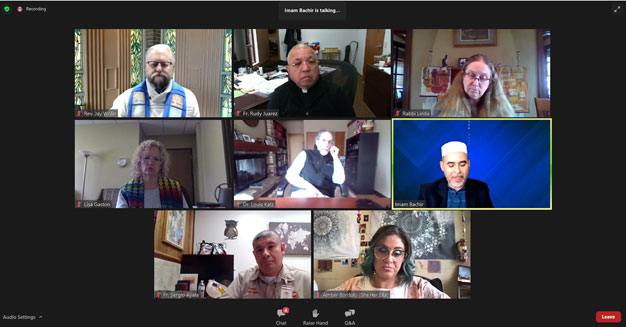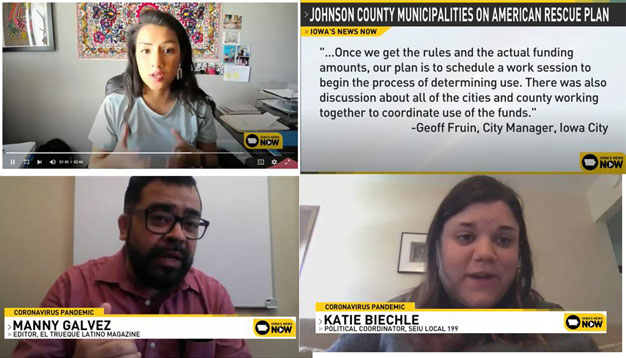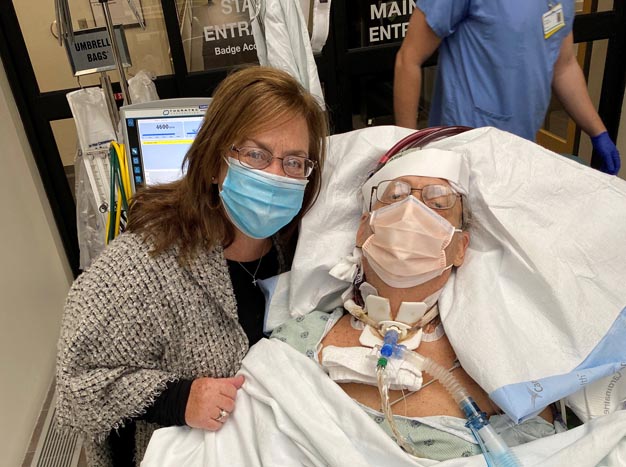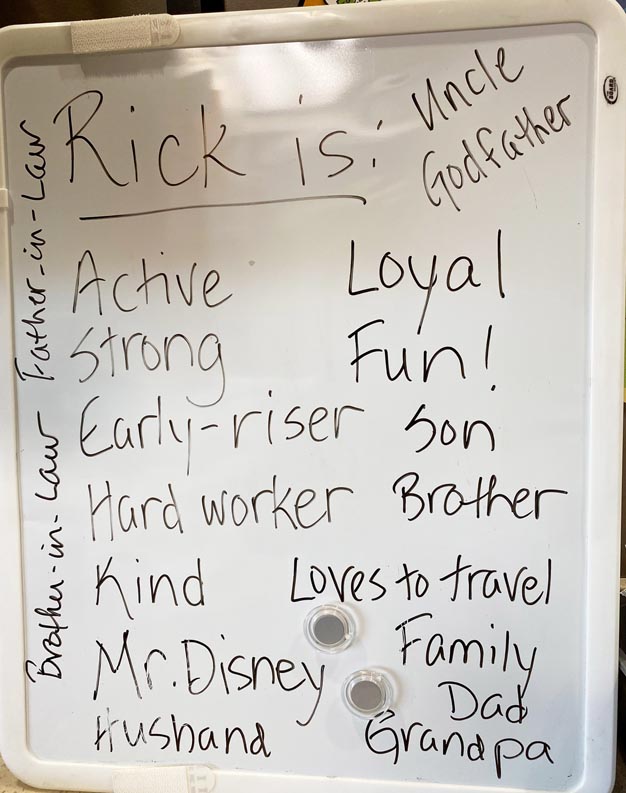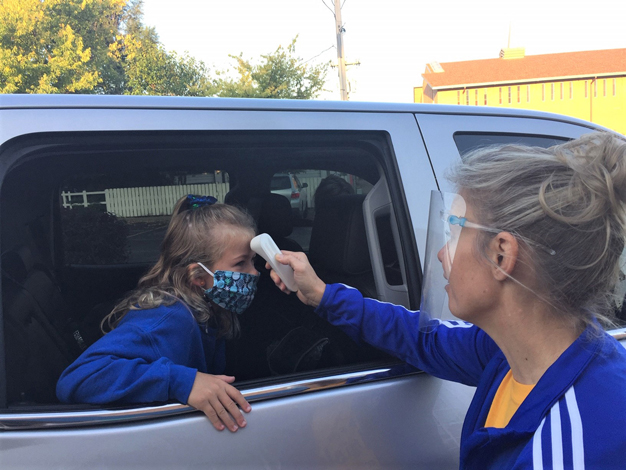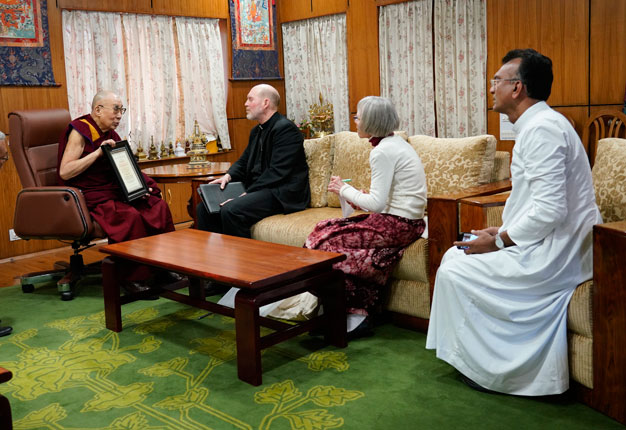
Bishop Thomas Zinkula, Barb Arland-Fye and Father Francis Bashyam talk with the Dalai Lama while in India two years ago to present the Pacem in Terris Peace and Freedom Award.
By Barb Arland-Fye
Editor
The mushrooming COVID-19 crisis in India caused me to send a message to Father Francis Bashyam, a priest who became a friend when I traveled to India two years ago with Bishop Thomas Zinkula. Father Francis is a good friend of the bishop and served as our guide during our multipurpose trip that included a presentation of the Pacem in Terris Peace and Freedom Award to the Dalai Lama.
Since then, Father Francis has shared news from India with me. He sends photos and short notes about news in the country, his extended family, liturgical celebrations and ministry. We have corresponded about the coronavirus and its impact on the people of India, particularly the migrant workers, who have suffered greatly during this pandemic. Father Francis organized meal-packaging and distribution efforts to feed desperately poor and hungry migrants traveling a long way home during the pandemic shutdown last year.
During the past week, he sent links to articles about the heartbreaking situation in India. “Covid: India sees world’s highest daily cases amid oxygen shortage,” “India Covid crisis: Hospitals buckle under record surge,” headlines to two separate BBC News articles read. “Covid-19 situation in India ‘beyond heartbreaking:’ WHO chief,” reads another headline, from the Deccan Herald.
“The country of 1.3 billion has become the latest hotspot of a pandemic that has killed more than three million people worldwide, even as richer countries take steps toward normality,” the Deccan Herald reported April 26. India has the dubious distinction of ranking fourth among the countries worst affected by COVID-19. The United States, Brazil and Mexico rank first, second and third, respectively. However, India’s cases are driving up the numbers.
I conveyed my alarm to Father Francis in a message April 26, telling him that U.S. news outlets were reporting 350K cases daily and more than 2,300 deaths daily. My heart feels heavy as I view images of grief-stricken Indians receiving word that family members have just died from COVID-19 or are ill themselves and receiving some of the scarce supply of oxygen to stay alive.
The screensaver on my laptop features a wonderful photo taken two years ago at the home of family members of Father Nathan, where we celebrated friendship and a delicious meal during our visit to India. Seeing their smiling faces (including mine) fills me with a sense of longing to visit them again someday. I can’t help but wonder about the expression on their faces today. COVID-19 is not discriminating. The stealthy, mutating disease seems to pick victims at random. My thoughts and prayers are with them.
News outlets, including Catholic News Service, have published stories quoting health care providers, religious leaders and others critical of the government for a lack of planning and foresight regarding this second, massive and brutal wave of COVID-19. “Please pray to God (to) give us strength to save some lives,” Father P.A. George says in an April 26 Catholic News Service article. He heads the largest Catholic hospital in New Delhi.
Long before the pandemic, I began praying for God’s blessings, guidance and for the well-being of the people that I met in India, particularly Fathers Francis and Nathan, their family and friends and the people they serve in their ministry. I also pray for Indians living on peripheries of society, especially the migrant workers and their families. I pray for their health and well-being and for an end to deprivation, discrimination, hunger, poverty and other crises.
Bishop Zinkula has been to India twice, and developed lasting friendships. “I have been worried about the situation in India all along, especially in the Diocese of Bellary where I got to know many priests and laity. To be honest, given the state of affairs in India — a high concentration of people, close living quarters, its situation as a developing nation, etc. — I am surprised that what is happening now didn’t happen early on in the pandemic. I think about and pray for my friends in India often, and I check in with them on a regular basis to see how they are doing.”
Please join us in praying for India.
(Contact Editor Barb Arland-Fye at arland-fye@davenportdiocese.org)







